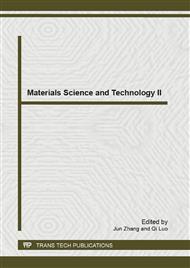p.177
p.185
p.191
p.199
p.203
p.209
p.214
p.218
p.223
Effect of TiN/Electroless Ni Duplex Coatings on Surface Hardness and Erosion Behavior of ADI
Abstract:
This study utilized electroless nickel (EN) and cathodic arc evaporation (CAE) technologies, with the known advantage of low processing temperature, to treat the austempered ductile iron (ADI) substrates. The eligibility of applying the EN and CAE-TiN duplex coatings on ADI, along with the coating properties, such as structure, roughness, adhesion, and surface hardness were evaluated and analyzed. Moreover, erosion tests were performed to further understand the effect of both the coatings on the erosive behavior of ADI. The results showed that the unique microstructure of ADI did not deteriorate after EN and CAE treatments. By the way of TiN/EN duplex coatings, surface hardness of ADI largely increased from 398 to 2243 HV5g. Moreover, the duplex coated ADI had a noticeable performance on erosion protection under a specific erosive environment with Al2O3 particles.
Info:
Periodical:
Pages:
203-208
Citation:
Online since:
July 2013
Authors:
Price:
Сopyright:
© 2013 Trans Tech Publications Ltd. All Rights Reserved
Share:
Citation:


